Tandon’s Newest Faculty Members Bring Expertise in Clean Energy, Nanomaterials, Machine Learning, and More
The face of engineering is constantly changing. While we take pride in being the school that educated James J. Wood (1879), who is responsible for the machinery that produced the distinctive cables of the iconic Brooklyn Bridge, and Jasper Kane (1928), who figured out a way to mass-produce penicillin, thereby saving more than a million lives during World War II alone, we take equal pride in our engineers who are making strides in biotechnology, those who are at the forefront of information technology, and those who are creating desperately needed clean-energy solutions. Our newest faculty members are poised to contribute to the Tandon legacy in their own ways.
Rakesh Kumar Behera: Introducing Students to Materials Science
Alauddin Bhuiyan: Eyeing Medical Advancements
Peter Carr: Industry Expertise
Anna Choromanska: What the Human Brain Can’t Tackle
Michael Driscoll: An Industry Vet
Yury Dvorkin: Keeping the Lights On
Miguel Modestino: Walking in the Footsteps of Herman Mark
Pavlos Mourdoukoutas: Music Man
Seung-Hyun “Luke” Rhee: Spurring Innovation
Julia Robinson-Surry: Good Chemistry
Tony Rothman: A “Novel” Professor
Ayaskanta Sahu: Engineering on a Nanoscale
Gustavo Sandoval: The Path from Microsoft Management to Professor
Kate Sicchio: Working at the Intersection of Choreography and Technology
Andrea Silverman: Engineering Clean Water for the World
Angelo Tafuni: At Home in the Department of Mechanical and Aerospace Engineering
Xin (Matt) Wang: The Importance of Unit Operations
Rakesh Kumar Behera: Introducing Students to Materials Science
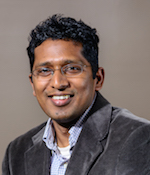 “I’m aiming to be a very student-centered instructor emphasizing active learning,” Rakesh Kumar Behera, the Department of Mechanical and Aerospace Engineering’s newest industry assistant professor, explains. “I’ll have formal office hours, but I’m also very willing to make time whenever students have doubts outside the classroom.”
“I’m aiming to be a very student-centered instructor emphasizing active learning,” Rakesh Kumar Behera, the Department of Mechanical and Aerospace Engineering’s newest industry assistant professor, explains. “I’ll have formal office hours, but I’m also very willing to make time whenever students have doubts outside the classroom.”
Behera is slated to teach courses related to materials science, including an introductory course. His multidisciplinary expertise primarily focuses on establishing fundamental structure-property relationship in advanced materials for energy applications, such as nuclear power and solid oxide fuel cells that are regarded as cleaner energy technologies.
“My focus is to highlight the interdisciplinary nature of the topics,” he continues, “because I want each of my students to understand that basic science and engineering can impact many different fields. No knowledge is wasted.”
As an industry professor, much of Behera’s time will be spent in the classroom, a prospect he anticipates enjoying given his extensive mentoring and teaching assistant experience at Louisiana State University, where he earned his master’s degree in Mechanical Engineering in 2004, the University of Florida in Gainesville, where he earned both a master’s degree (2008) and Ph.D. (2009) in Materials Science and Engineering, and at Georgia Institute of Technology. (He also holds a Bachelor of Engineering degree in Metallurgical Engineering from National Institute of Technology, one of India’s premier engineering institutions.)
Another thing he’s looking forward to after years spent in those temperate climes: “There will be an obvious shift in the weather,” he says. “Cold and snow are an integral part of working in New York City, and my family and I are looking forward to it.”
Alauddin Bhuiyan: Eyeing Medical Advancements
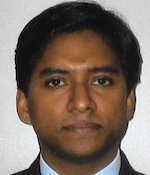 While people may say the eyes are a window to the soul, medical professionals know they can also provide a window to our physical health, thanks to the data generated by increasingly sophisticated imaging techniques.
While people may say the eyes are a window to the soul, medical professionals know they can also provide a window to our physical health, thanks to the data generated by increasingly sophisticated imaging techniques.
Alauddin Bhuiyan, a visiting industry assistant professor in the Department of Computer Science and Engineering (with a joint appointment at the School of Medicine), is engaged in helping doctors discover new biomarkers for such conditions as glaucoma and macular degeneration – leading causes of vision loss.
“When a doctor discovers a small retinal lesion on an image, he or she can now run it through a piece of software to be quantified,” Bhuiyan explains. “Subtle intensity change in the retinal image can be a precursor for glaucoma, so this can determine what plan of action a patient should take to prevent blindness. We have even found retinal image based markers that can predict hypertension and Alzheimer’s and are currently working on developing a prediction model for finding individuals at risk of coronary heart disease and stroke.”
Bhuiyan – who earned his doctoral degree from the University of Melbourne, in Australia, and has been a visiting scholar at Harvard Medical School – is thus creating algorithms that can save vision and lives. He is passionate about that research mission and takes great satisfaction in inspiring his students to similar heights. “I love the process of teaching,” he says. “Reaching out to spark their interest, talking about my research . . . those are some of the best parts of being at a university.”
Peter Carr: Industry Expertise
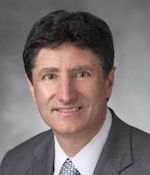 Financial engineering at NYU Tandon dates to 1995, when the school — then called Polytechnic University — launched the second such program in the country and the first certified by the International Association of Financial Engineers (IAFE). From the start, the rigorous program focused on preparing students for Wall Street careers in portfolio management and derivatives and drew heavily from internationally recognized professionals as faculty members.
Financial engineering at NYU Tandon dates to 1995, when the school — then called Polytechnic University — launched the second such program in the country and the first certified by the International Association of Financial Engineers (IAFE). From the start, the rigorous program focused on preparing students for Wall Street careers in portfolio management and derivatives and drew heavily from internationally recognized professionals as faculty members.
Peter Carr, a recognized expert on derivatives who has produced seminal work on volatility, is the Department of Finance and Risk Engineering’s new chairman. He comes to Tandon with a long list of honors to his credit, including being named Quant of the Year by Risk Magazine and Financial Engineer of the Year by the IAFE and SunGard. Institutional Investor named him to its Tech 50 list of financial industry technology leaders each year from 2011 to 2014.
Although he has extensive experience in the financial industry, Carr, formerly Morgan Stanley’s Global Head of Market Modeling, is no stranger to academia. His CV includes teaching for almost a decade at Cornell University and he has also directed the master’s MF program at NYU’s Courant Institute in recent years.
He has already begun his search for industry professionals who will reach beyond the traditional teaching duties of adjuncts; they will also explore cutting-edge research in the academic program known for bridging theory and practice. “Some of New York City’s foremost financial engineers have expressed enthusiasm about the opportunity to break new research ground in the field for which NYU Tandon is already known: preventing catastrophic financial loss,” he explained.
Anna Choromanska: What the Human Brain Can’t Tackle
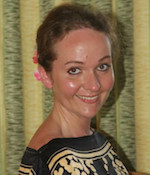 The term modern-day Renaissance woman might well have been coined to describe Anna Choromanska, a new assistant professor in the Department of Electrical and Computer Engineering. A graduate of Warsaw’s Mieczyslaw Karlowicz Music School, she has played the piano since the age of six; is multilingual; is also an accomplished visual artist who holds a diploma in painting from the Warsaw School of the Arts; and is training in salsa dancing and appearing on stage with the Ache Performance Project of Frankie Martinez, one of the greatest and most revolutionary salsa performers and choreographers of our time. And if all that wasn’t enough, she also happens to have been a Fu Foundation School of Engineering and Applied Science Presidential Fellowship holder at Columbia University, where she earned her doctoral degree in electrical engineering in 2014.
The term modern-day Renaissance woman might well have been coined to describe Anna Choromanska, a new assistant professor in the Department of Electrical and Computer Engineering. A graduate of Warsaw’s Mieczyslaw Karlowicz Music School, she has played the piano since the age of six; is multilingual; is also an accomplished visual artist who holds a diploma in painting from the Warsaw School of the Arts; and is training in salsa dancing and appearing on stage with the Ache Performance Project of Frankie Martinez, one of the greatest and most revolutionary salsa performers and choreographers of our time. And if all that wasn’t enough, she also happens to have been a Fu Foundation School of Engineering and Applied Science Presidential Fellowship holder at Columbia University, where she earned her doctoral degree in electrical engineering in 2014.
After graduating from Columbia, Choromanska became a postdoctoral researcher at NYU’s Courant Institute, where she focused on the branch of machine learning known as deep learning, which seeks to formulate algorithms and computational models that will enable computers to work and solve tasks that the human brain can tackle – but that computers, so far, cannot. “There are many practical applications for deep learning, such as autonomous driving” she explains. “My research is aimed at providing a theoretical understanding but also expanding the set of practical problems that can be solved with computers.” She is extremely interested in large-scale machine learning problems (e.g. problems arising when having access to massive data sets or large computational models) and various branches of machine learning – among them the aforementioned deep learning, but also massive classification problems (classifying objects such as images into one or few out of millions of categories very fast) and more. "Big data and big models are everywhere nowadays, so we need to seek new tools to scale machine learning to this large-scale world we live in," she says.
Choromanska hails from a family of researchers; both of her parents are university professors, and her brother holds a research position at Google in New York. She arrives at the Department of Electrical and Computer Engineering already deeply familiar with its workings: her husband, Mariusz Bojarski, was until recently a postdoctoral fellow in the department, focusing on wireless power transfer. (He also served as CTO for HEVO, a Tandon incubator company developing wireless charging stations for electric cars, and he is now working on the future of autonomous cars at NVIDIA.)
While Choromanska anticipates being very busy in her classroom and lab, we can only hope that on occasion she’ll put the piano outside Pfizer to very good use.
Michael Driscoll: An Industry Vet
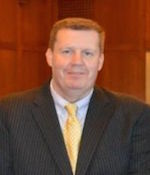 Michael Driscoll is a Black Belt, but not in the sense that comes immediately to mind for most people. His Black Belt was earned not by his prowess as a martial artist but by his skills as a savvy business leader. As a Verizon executive of almost three decades, Driscoll was chosen for the company’s highly competitive Lean Six Sigma Program in 2014 and received Black Belt certification in January 2016. During his time in the program, he received two Best in Class Awards — one for a project that saved Verizon more than $3 million and another that resulted in a savings of more than $11 million. (The Lean Six Sigma methodology is used in a variety of businesses in order to maximize efficiency and productivity.)
Michael Driscoll is a Black Belt, but not in the sense that comes immediately to mind for most people. His Black Belt was earned not by his prowess as a martial artist but by his skills as a savvy business leader. As a Verizon executive of almost three decades, Driscoll was chosen for the company’s highly competitive Lean Six Sigma Program in 2014 and received Black Belt certification in January 2016. During his time in the program, he received two Best in Class Awards — one for a project that saved Verizon more than $3 million and another that resulted in a savings of more than $11 million. (The Lean Six Sigma methodology is used in a variety of businesses in order to maximize efficiency and productivity.)
He was, quite understandably, a popular figure at the iconic company, which he had joined directly after high school as a 411 operator. “Of course it wasn’t called Verizon all the way back then,” Driscoll explains, “but despite several name changes, the company has always stressed the importance of education to its employees, and thanks to managers who saw the potential in me, I was encouraged to get my degrees.” Attending school on nights and weekends, Driscoll earned a bachelor’s degree (magna cum laude) in economics from Marymount College, a master’s degree in Telecommunications and Information Management from Tandon, and a master’s in business administration, also from Tandon and dating back to a period when the School of Engineering maintained an MBA program.
Besides being grateful to Verizon, Driscoll, who gradually worked his way up through a series of increasingly senior managerial positions, felt deeply appreciate of his professors. “Without the education I received here, I would not have accomplished what I have in the business world,” he says, “and while I loved working as a 411 operator, I was very happy to have the chance to progress through the ranks of the company.”
When offered an adjunct’s post in the Department of Technology Management and Innovation in 2010, Driscoll saw it as a chance to contribute in some small way to the next generation of Tandon students. Given his years of working full time while earning his degrees, the idea of working and teaching concurrently did not intimidate him. “It involved a lot of running back and forth from the MetroTech Plaza to the Verizon building on Flatbush, but I managed,” he quips.
More daunting was the offer to join the department as a full-time lecturer that came in 2016. Driscoll had envisioned remaining at Verizon until he was ready for retirement yet welcomed the chance to teach more. With some apprehension, he approached his Verizon managers and explained that he would be leaving the company after devoting 29 years of his life to it.
“It wasn’t easy,” he admits, “but I love this school and department and it’s wonderful to watch as enrollment increases, the on-line component expands, and more students get the benefits of the education that served me so well.”
Yury Dvorkin: Keeping the Lights On
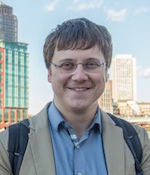 Yury Dvorkin, a new assistant professor in the Department of Electrical and Computer Engineering, jokes that he has a simple mission: to keep the lights on. Not so simple, however, is his quest to do so reliably, cost-efficiently, and cleanly. “Renewable energy sources like wind and solar are relatively affordable and very clean,” he explains, “but they introduce uncertainty and variability in power system operations and planning, as there might not always be sufficient wind or sun to continuously meet demand for electricity.”
Yury Dvorkin, a new assistant professor in the Department of Electrical and Computer Engineering, jokes that he has a simple mission: to keep the lights on. Not so simple, however, is his quest to do so reliably, cost-efficiently, and cleanly. “Renewable energy sources like wind and solar are relatively affordable and very clean,” he explains, “but they introduce uncertainty and variability in power system operations and planning, as there might not always be sufficient wind or sun to continuously meet demand for electricity.”
Dvorkin’s work draws upon several cross-disciplinary fields, including electrical engineering, economics, and policy analysis. His research allows power companies to optimally integrate emerging technologies, (e.g. energy storage and flexible loads) and to improve utilization of renewable generation.
Dvorkin, who defended his Ph.D. thesis earlier this year, is excited about attaining a professorship. “I’m honored to be at NYU,” he says, “and my focus will be on helping the institution cement its status at the forefront of clean-energy research, while promoting excellence and diversity in engineering.”
Miguel Modestino: Walking in the Footsteps of Herman Mark
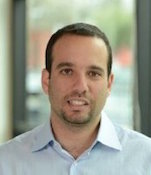 Miguel Modestino, a new assistant professor in Tandon’s Department of Chemical and Biomolecular Engineering, has lived, studied, and worked in plenty of iconic and storied locations. Born in Venezuela, he earned his bachelor’s and master’s degrees in chemical engineering from MIT, in Cambridge, Massachusetts, before going on to receive a doctoral degree (as well as a certificate in management of technology) from the University of California, Berkeley. Before joining NYU he served as a postdoctoral fellow at the École Polytechnique Fédérale de Lausanne, in Switzerland. “Switzerland has a strong culture of scientific research,” he says, “but I’m looking forward to returning to the U.S., where I was educated, and to working in a dynamic city like New York.”
Miguel Modestino, a new assistant professor in Tandon’s Department of Chemical and Biomolecular Engineering, has lived, studied, and worked in plenty of iconic and storied locations. Born in Venezuela, he earned his bachelor’s and master’s degrees in chemical engineering from MIT, in Cambridge, Massachusetts, before going on to receive a doctoral degree (as well as a certificate in management of technology) from the University of California, Berkeley. Before joining NYU he served as a postdoctoral fellow at the École Polytechnique Fédérale de Lausanne, in Switzerland. “Switzerland has a strong culture of scientific research,” he says, “but I’m looking forward to returning to the U.S., where I was educated, and to working in a dynamic city like New York.”
Modestino is engaged in developing new materials with applications in the area of clean energy and finding new uses for resources that are already plentiful and cheap. “Take the example of water and sunlight,” he explains. “Sunlight can split a water molecule into hydrogen and oxygen, and hydrogen is now being used to power vehicles that are already commercially available in the U.S. Another example is using the sun’s energy to transform environmental CO2 into commodity chemicals used in manufacturing. We’re engineering devices and multi-functional materials so that these transformations can happen more efficiently and in a cost-effective way.”
Modestino has won numerous honors during the course of his academic career, including podium finishes in the VII Iberoamerican Chemistry Olympiad, 34th International Chemistry Olympiad, and 35th International Chemistry Olympiad; being named in 2002 to the Jose Felix Ribas Order, the highest academic honor the Venezuelan Government bestows on its young people; and a 2015 Energy and Environmental Science Readers’ Choice Lectureship Award, given annually to an outstanding young scientist who has published in the prestigious journal.
He is also the recipient of a 2010 Arkema Graduate Fellowship, given to students with high promise in the polymer field. “My interest in polymers makes it particularly meaningful to come to Tandon,” he says. “For a young researcher to read about the school’s Polymer Research Institute and then walk the same halls as Herman Mark will be a great experience.”
Pavlos Mourdoukoutas: Music Man
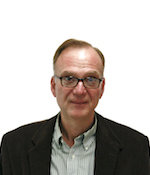 The master’s degree program in Management of Technology (MOT) at Tandon is aimed at producing professionals able to bridge the gap between the worlds of business and tech, and this year it has a new Academic Program Director, Pavlos Mourdoukoutas, who could be said to be adding music to that mix.
The master’s degree program in Management of Technology (MOT) at Tandon is aimed at producing professionals able to bridge the gap between the worlds of business and tech, and this year it has a new Academic Program Director, Pavlos Mourdoukoutas, who could be said to be adding music to that mix.
Long affiliated with Tandon as an adjunct and recently named an industry professor, Mourdoukoutas brings to the Department of Technology Management and Innovation decades of experience as an economist, including 20 years with the American Society of Composers, Authors and Publishers (ASCAP), a group engaged in advocacy and service for music creators. There he relied on economic theory and statistical techniques to analyze proprietary and syndicated data to formulate and defend ASCAP’s positions in royalty negotiations and litigation with major media conglomerates and served as a key strategist in developing optimum market penetration and activity-based costing studies to increase revenue and improve efficiency. (Among his accomplishments at ASCAP was the development of a simplified approach to licensing music use for local TV stations with minimum transaction costs that saved millions of dollars and been adopted as the industry norm.)
Mourdoukoutas is happy to be taking the helm at a time when the program and the department are becoming — like the music industry in some respects — increasingly global and dynamic. “We are attracting more and more international students, particularly with the growing popularity of on-line courses, which can be completed from anywhere in the world,” he says. “That means the program must become increasingly universal in scope and utility.”
Mourdoukoutas — who also co-founded the Operations Research Unit of the City of New York’s Office of Management and Budget, where he led a team that developed an award-winning portfolio of operations research models to assist a plethora of city agencies – hopes to ensure that his students make a smooth transition from coursework to the real work of the business world. “It’s very gratifying to know that what you’ve taught has enabled someone to go on to success in their chosen career,” he says.
Seung-Hyun “Luke” Rhee: Spurring Innovation
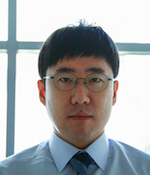 There is a long list of things that Seung-Hyun “Luke” Rhee, a new assistant professor in Tandon’s Department of Technology Management and Innovation, is looking forward to in coming to New York. “The city’s strong growth initiative to facilitate entrepreneurial activities is a very exciting phenomenon for anyone who studies technology innovation and entrepreneurship,” he explains. “It will be great to be part of it and also to contribute to the school both through my research and my teaching.” Another draw: the chance to attend games at Yankee Stadium. (He once worked as a semi-professional baseball columnist in his native South Korea.)
There is a long list of things that Seung-Hyun “Luke” Rhee, a new assistant professor in Tandon’s Department of Technology Management and Innovation, is looking forward to in coming to New York. “The city’s strong growth initiative to facilitate entrepreneurial activities is a very exciting phenomenon for anyone who studies technology innovation and entrepreneurship,” he explains. “It will be great to be part of it and also to contribute to the school both through my research and my teaching.” Another draw: the chance to attend games at Yankee Stadium. (He once worked as a semi-professional baseball columnist in his native South Korea.)
Luke Rhee holds a B.S. degree in Industrial Engineering from Seoul National University (2007), a Master of Information Management and Systems from the University of California, Berkeley (2009), and a Ph.D. in Management and Organizations from Northwestern University’s Kellogg School of Management, where he garnered the Art Stinchcombe Dissertation Prize. His dissertation research has been also recognized for several awards at Academy of Management (AoM) and Strategic Management Society (SMS) conferences.
At Tandon, Rhee is slated to teach a course in Quantitative Research Method for Ph.D. students and a capstone offering on Corporate Entrepreneurship for master's students in Management of Technology. His research involves identifying cognitive processes that enable individuals or firms to spur innovation within the constraint of their existing resources and capabilities. “Even well-educated individuals or firms rich with talented engineers, patents, and money often fail to come up with creative ideas, launch novel products, or respond to environmental changes,” he elaborates. “One key reason is they do not take advantage of their resources at hand in a smart way, so my goal is to shed light on new ways of thinking that can maximize the value of their resources and capabilities and thus lead to success at innovation.”
Julia Robinson-Surry: Good Chemistry
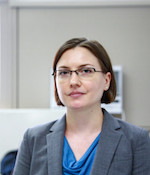 Julia Robinson-Surry does not promise that the required undergraduate chemistry course she is teaching will be easy. It will, however, be vital. “We will cover all the important general chemistry topics an aspiring engineer needs to know in the space of a semester,” she says.
Julia Robinson-Surry does not promise that the required undergraduate chemistry course she is teaching will be easy. It will, however, be vital. “We will cover all the important general chemistry topics an aspiring engineer needs to know in the space of a semester,” she says.
The new industry assistant professor realizes that that prospect might seem daunting but wants her students to know that she is there to help. “I hope that they’ll come to see me as soon as they feel they’re running into trouble, so we can get to the root of it. I don’t want them to feel intimidated or lost.”
Robinson-Surry has ample experience with young learners. Before becoming a faculty member at St. John’s University (the post she held prior to joining Tandon), she taught chemistry at Bard High School Early College Queens in a program that allows teens to earn associate’s degrees while still in high school. “It was a valuable and unique experience teaching in the New York City Department of Education system,” she says. “That’s not something a lot of professors get to do, and it gave me a good perspective on how incoming college freshman think and learn, since I taught students just entering that stage.”
Robinson-Surry’s own student days were not so long ago. In 2011 she earned her doctoral degree in organic chemistry from the Massachusetts Institute of Technology, where she garnered numerous laurels, including a National Science Foundation Graduate Research Fellowship (2007-10); an AstraZeneca Graduate Fellowship in Organic Chemistry (2009); an MIT Wyeth Scholar designation (2010); and a David A. Johnson Graduate Fellowship. Prior to that, at Reed College, in Oregon, she had been the recipient of a Barry M. Goldwater Scholarship, considered among the most prestigious awards conferred upon undergraduates studying the sciences in the U.S.
It was a short leap from conscientious student to dedicated teacher. “Even if I’m lecturing in a packed hall,” she says, “it’s very important to me that each and every student absorb the material and understand how it relates to their chosen major or field of study.”
Tony Rothman: A “Novel” Professor
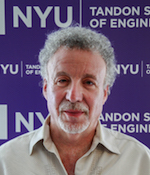 To say that Tony Rothman, a lecturer in the Department of Applied Physics, is interested in the answers to the fundamental questions of the universe, would be a gross understatement.
To say that Tony Rothman, a lecturer in the Department of Applied Physics, is interested in the answers to the fundamental questions of the universe, would be a gross understatement.
He is, as he has described himself, a theoretical physicist who has specialized in general relativity and cosmology, with a focus on early universe and black hole physics and an occasional foray into quantum mechanics, as well as a few other areas. It is the innocuous phrase “a few other areas” that reveals that Rothman is interested in not only those fundamental questions but just about everything else you could imagine ... from the life of the French mathematician Évariste Galois to the physics involved in crafting a violin to the Great Siege of Malta, Rothman has written a dozen fiction and non-fiction books and hundreds of articles on those topics and many others. For his efforts he has won numerous writing awards and has been nominated for the Pulitzer Prize.
While some of his writing draws upon his work as a scientist — his experiences at the Princeton Plasma Physics Laboratory, for example, inspired one of his latest novels, Firebird, about a rivalry between two fusion labs to create a limitless source of energy– a great deal of it is driven just by his insatiable intellectual curiosity. His volumes about Malta were inspired by what was once the most famous event of the 16th century — now little remembered — when in 1565 the Ottoman Empire tried unsuccessfully to invade the tiny island nation, defended by five hundred Knights of Malta and another few thousand mercenaries and peasants.
“Researching 16th-century Malta was no problem; as a scientist, I know how to do research,” he recalls. “The challenge was teaching myself to read the 400-year-old French my primary resource materials were written in.”
Asked how students respond to being taught by such a prolific author, Rothman, who taught at Princeton and Harvard before coming to NYU, responds, “Most don’t even realize it because I don’t bring it up. After all, many of the things I’ve written about aren’t relevant to my courses on introductory physics and general relativity.”
Ayaskanta Sahu: Engineering on a Nanoscale
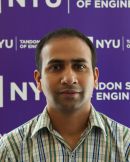 Ayaskanta Sahu, a new assistant professor in Tandon’s Department of Chemical and Biomolecular Engineering, is working to meet the world’s demand for energy — on a nanoscale. “You can tackle the problem a few ways,” he says. “You can search for new materials or you can seek new functionality in already existing materials.”
Ayaskanta Sahu, a new assistant professor in Tandon’s Department of Chemical and Biomolecular Engineering, is working to meet the world’s demand for energy — on a nanoscale. “You can tackle the problem a few ways,” he says. “You can search for new materials or you can seek new functionality in already existing materials.”
To that end, Sahu, who holds a B. Tech. degree in Chemical Engineering from the Indian Institute of Technology Roorkee (2007) and a Ph.D. in Chemical Engineering from the University of Minnesota (2012), is working at the nanoscale to understand, predict and control the optical, thermal and electronic properties of various materials in order to find cost-effective, scalable, and efficient energy solutions. “Take the example of a traditional semiconductor; we can shrink it to nanosize and reduce the melting point by magnitudes or tailor the color of light emitted all the way from red to violet,” he explains.
Sahu is also exploring a technique called doping, which involves introducing trace amounts of intentional impurities into a pure semiconductor to drastically alter its optical and electrical properties. The focus of his work is on engineering interactions at the nanoscale to drive macroscopic behavior. To achieve that goal, he designs novel organic-inorganic “hybrid” nanostructures, where material synergies lead to performance that is greater than the sum of its parts.
He predicts a time when waste heat can be used to regenerate electricity. “One day a jogger might be able to power his or her own watch, just with body heat, or small electronics in cars might run on the heat they produce,” he says. “On the other hand, clothing could be engineered to cool you, eliminating the need for air conditioning.”
Prior to joining NYU, Sahu, the author of numerous journal articles, was a visiting scientist at ETH Zurich and a materials postdoctoral fellow in the Molecular Foundry at Lawrence Berkeley National Laboratory. He is anticipating his time in New York — and in the classroom. “I love teaching,” he asserts, “and I’m looking forward to interacting with both undergraduate and graduate students.”
Gustavo Sandoval: The Path from Microsoft Management to Professor
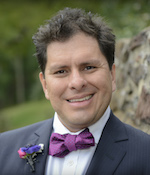 If you have ever used Microsoft PowerPoint, Word, or Excel, you have Gustavo Sandoval to thank for some of the useful features in those products. During the late 1990s Sandoval, now a new industry professor in the Department of Computer Science and Engineering, worked as a software design engineer at the iconic company.
If you have ever used Microsoft PowerPoint, Word, or Excel, you have Gustavo Sandoval to thank for some of the useful features in those products. During the late 1990s Sandoval, now a new industry professor in the Department of Computer Science and Engineering, worked as a software design engineer at the iconic company.
Over the course of his almost two decades there, he rose through the managerial ranks, helping develop an SMS alert service used by tens of millions of people around the world, working in partnership with Verizon Wireless and Vodafone to ensure the integration of phone contacts with Facebook and Twitter, leading cross-disciplinary and cross-organizational teams on the company’s most requested application program interfaces (APIs) for Windows, and more.
Sandoval — whose areas of expertise include mobile applications, distributed systems, machine learning, data science, and project management — also spent time developing curriculum, creating teaching materials, and mentoring students at the educational company General Assembly. (Before coming to the U.S. to earn a master’s degree in computer science at California State University, he had, in fact, taught at a high school in his native Guatemala.)
By then Sandoval had founded his own consulting firm, Bergen Labs, which was devoted to helping companies of all sizes design, develop, and deploy mobile and data applications, but despite the demands on his time that venture entailed, in January 2016 he accepted a post as a Tandon adjunct, teaching such classes as C programming and Operating Systems.
After a single semester, Sandoval was offered the opportunity to become an industry professor. That title is fitting. “I want my students to always keep in mind that Computer Science is not only theory”” he explains. “The great thing about Computer Science is in its applications, so students will be learning what actually works in industry, and we’ll be focused on the pragmatic, not only the theoretical.”
He is looking forward to assigning forward-looking projects and anticipates his students making good use of the new Maker Space opening up in Rogers Hall. He might be using the facility for a student project of his own as well: Sandoval recently began auditing courses in NYU’s Interactive Telecommunications Program. “It’s always useful to put yourself in the position of being a beginner and learning new things,” he says.
Kate Sicchio: Working at the Intersection of Choreography and Technology
 “Think about swiping the touchscreen on your phone to scroll down or making a pinching gesture to enlarge a photo on your tablet,” Kate Sicchio says. “In some ways those movements are forms of choreography. And like all movements, they can be associated with emotions. Think of how you feel when you methodically and deliberately move your finger versus when you make a quick flicking motion.”
“Think about swiping the touchscreen on your phone to scroll down or making a pinching gesture to enlarge a photo on your tablet,” Kate Sicchio says. “In some ways those movements are forms of choreography. And like all movements, they can be associated with emotions. Think of how you feel when you methodically and deliberately move your finger versus when you make a quick flicking motion.”
Sicchio — a choreographer, media artist and performer who earned her doctoral degree from the University of East London — works at the intersection of choreography and technology, studying how one affects the other. The two fields have aspects in common, she asserts, explaining that developing algorithms and transforming information structures in software can be as creative and exploratory a process as conceiving and structuring choreographic material.
Now serving as a visiting assistant professor in Tandon’s Department of Technology, Culture, and Society, Sicchio first came to NYU in 2015 as an adjunct instructor, teaching students in her live performance class how to code music and make innovative use of wearable technology.
In her new role, Sicchio envisions helping her Integrated Digital Media students to choose senior projects they connect with emotionally and to get over any creative hurdles they might face. She’ll also teach master’s candidates and will continue to be involved in Tech Kids Unlimited, a technology-based educational organization for youngsters with special needs that often holds programs at Tandon. “I like knowing a lot of people and teaching a wide variety of students,” she says, “and because I’m a very hands-on instructor, my door is always open to them.”
In addition to becoming a visiting assistant professor, mid-2016 holds more exciting developments for Sicchio; that’s when her new book, Integrating Art and Technology in Practice: Techne/Technique/Technology – which explores the artistic process, creativity and collaboration, and personal approaches to creation and ideation in making digital and electronic technology-based art – is being released.
Andrea Silverman: Engineering Clean Water for the World
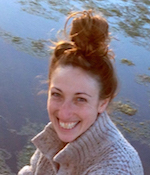 “Engineers who design water and wastewater treatment systems should understand the characteristics of waterborne microbial and chemical contaminants that present public health risks, and how those characteristics effect treatment efficiency,” Assistant Professor of Civil and Urban Engineering Andrea Silverman says. “Similarly, public health professionals who focus on water-related illnesses should have a good understanding of the benefits and limitations of technologies used to treat water and assure its safety.”
“Engineers who design water and wastewater treatment systems should understand the characteristics of waterborne microbial and chemical contaminants that present public health risks, and how those characteristics effect treatment efficiency,” Assistant Professor of Civil and Urban Engineering Andrea Silverman says. “Similarly, public health professionals who focus on water-related illnesses should have a good understanding of the benefits and limitations of technologies used to treat water and assure its safety.”
Silverman, whose research focuses on the detection and control of waterborne pathogens that cause gastrointestinal illnesses, has a joint appointment to NYU’s College of Global Public Health. She is thus looking forward to bringing together students from both schools at her Brooklyn-based environmental engineering lab and hopes to put them to work on collaborative projects with real-world applications.
Since earning her undergraduate degree in environmental engineering from MIT and her master’s and doctoral degrees in the same field from the University of California, Berkeley, Silverman has studied disinfection processes (including the major role that sunlight plays) in natural wastewater treatment systems, such as manmade treatment ponds and wetlands designed specifically to treat sewage; she uses her findings to develop numerical models to predict disinfection rates – a boon to those designing sustainable sanitation systems that meet health-based disinfection goals. It’s important for researchers to get out in the field, she asserts, and her newest area of study involves examining bacterial pathogens in sewage, which have proven to be more resilient to treatment than lab-based organisms.
Silverman, who has worked in Kenya and Ghana, was born and raised in New York and is enthusiastic about the research possibilities posed by her densely populated hometown. “New York is a huge city that is able to provide high quality water and sanitation services to millions of people,” she explains. “There are a lot of lessons to be learned from New York’s successes, as well as opportunities for improving wastewater treatment and storm water management.”
Angelo Tafuni: At Home in the Department of Mechanical and Aerospace Engineering
 Angelo Tafuni’s official title may be “Visiting” Professor, but the Department of Mechanical and Aerospace Engineering has been something of a home to him for years. He first arrived at Tandon from his native Italy in 2010, as part of an exchange program that allowed him to earn dual master’s degrees (one from NYU and one from Polytechnic of Bari). When it came time to earn his doctoral degree, his path seemed clear to him. “I loved New York University, and I loved New York City, so I remained.”
Angelo Tafuni’s official title may be “Visiting” Professor, but the Department of Mechanical and Aerospace Engineering has been something of a home to him for years. He first arrived at Tandon from his native Italy in 2010, as part of an exchange program that allowed him to earn dual master’s degrees (one from NYU and one from Polytechnic of Bari). When it came time to earn his doctoral degree, his path seemed clear to him. “I loved New York University, and I loved New York City, so I remained.”
As a graduate student, Tafuni assisted Professor Edward Wolf with the book Nanophysics of Solar and Renewable Energy, managed the department’s Fluid and Thermal Systems Laboratory, and served as a teaching fellow in undergraduate lab courses as the Mechanics of Materials, Fluid Mechanics, and Heat Transfer. His own research now focuses on Computational Fluid Dynamics – an area with enormous practical applications in such fields as ocean engineering and biomedicine. Among his recent projects has been a new algorithm that has been incorporated into the DualSPHysics project, a popular Smoothed Particle Hydrodynamics open-source code developed to study free-surface flows.
Upon earning his Ph.D. in early 2016, he was honored to be asked to stay on. “I see my new post as a way to give back to Tandon and the Department,” he says. “I’d like to inspire my students the same way my professors inspired me.
Xin (Matt) Wang: The Importance of Unit Operations
 Xin (Matt) Wang, a new lecturer in the Department of Chemical and Biomolecular Engineering, is doing more than presenting a lab course; he’s offering students a chance to take a hands-on role in designing and implementing their experiments for unit operations of Chemical Engineering. (In chemical engineering, the unit operations are largely used to conduct one or multiple physical steps of separation, mixing, or controlling mass and heat transfer.) He will also contribute to further modernizing the lab through introducing new experimental facilities and software packages.
Xin (Matt) Wang, a new lecturer in the Department of Chemical and Biomolecular Engineering, is doing more than presenting a lab course; he’s offering students a chance to take a hands-on role in designing and implementing their experiments for unit operations of Chemical Engineering. (In chemical engineering, the unit operations are largely used to conduct one or multiple physical steps of separation, mixing, or controlling mass and heat transfer.) He will also contribute to further modernizing the lab through introducing new experimental facilities and software packages.
Wang, a native of China who came to Brooklyn to study at Tandon after receiving his undergraduate degree from Dalian University of Technology, earned his Ph.D. in 2015 and was hired as an adjunct instructor soon after thanks to his academic performance. As a graduate research assistant, he had worked collaboratively with his professors as well as with scientists from the University of California and the Lawrence Berkeley National Laboratory, to study lithium polymer electrolytes and depolarized light scattering. Concurrently, he worked as a research associate at IceStone, a Brooklyn-based manufacturer of sustainable glass and concrete countertop surfaces for architectural use.
Core, required courses such as the one he will be teaching as a lecturer help prepare senior students with the solid theoretical and practical skills of chemical engineering. He explains, “Unit operation training is a unique experience, and students will greatly benefit from what they learn, whether they’re working in the petroleum industry, the pharmaceutical field, or really anywhere.”

